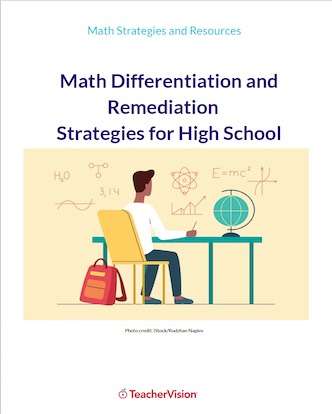Help your students learn a critical 21st Century skill
Data analysis is the process of interpreting the meaning of the data we have collected, organized, and displayed in the form of a table, bar chart, line graph, or other representation. In this teacher guide, you can learn the importance of utilizing data analysis with your students and strategies for teaching students how to conduct data analysis. Students can also transfer their learning to other subjects.Looking for more resources on 21st Century skills and social-emotional learning? Find them in our FutureFit resources center.
Analyzing Data
What Is It?
Data analysis is the process of interpreting the meaning of the data we have collected, organized, and displayed in the form of a table, bar chart, line graph, or other representation. The process involves looking for patterns—similarities, disparities, trends, and other relationships—and thinking about what these patterns might mean.
When analyzing data, ask students questions such as:
What pattern do you see?
What does this graph tell you?
Who could use this data? How could they use it?
Why is this data shown in a line graph?
The process of collecting, organizing, and analyzing data is not always a simple, sequential process; sometimes a preliminary analysis of a data set may prompt us to look at the data in another way, or even to go back and collect additional data to test an emerging hypothesis. For example, students could survey their classmates on how they are transported to school (such as by car, by bus, by foot, or another way), and then display the data in a circle graph.
After analyzing the data in this graph, students might look at the data in a different way. Students might be interested in finding out more about people who are transported to school by car. Why do they ride in a car to school? Are they on a bus route? Do they carpool with other students? Are they close enough to school to walk, but choose to ride? Is the neighborhood between home and school too dangerous to walk through? Do the people who walk sometimes ride in a car, also? They might discover that most students in the "other" category ride their bikes to school, and decide to create an additional category.
In all grades, students look at graphical displays and describe them by identifying aspects such as the greatest value, the least value, and the relationship of one data point to another. Students in the intermediate grades learn how to summarize or characterize a data set in greater depth by determining the range and two measures of center, the mode and median. Students in the upper grades learn to find the third measure of center, the mean, and also to determine quartiles, identify outliers, and, for scatterplots, calculate a line or curve of best fit and describe any resulting correlation. High-school students should be able to design their own investigations that include effective sampling, representative data, and an unbiased interpretation of the results.
At every grade level, you should encourage students to think about the meaning of the data they have collected and displayed. The crucial question is "Why?"
Why Is It Important?
The ability to make inferences and predictions based on data is a critical skill students need to develop.
In studying data and statistics, students can also learn that solutions to some problems depend on assumptions and have some degree of uncertainty. The kind of reasoning used in probability and statistics is not always intuitive, and so students will not necessarily develop it if it is not included in the curriculum. (NCTM, 2000).
Data analysis is crucial to the development of theories and new ideas. By paying close attention to patterns, the stories behind outliers, relationships between and among data sets, and the external factors that may have affected the data, students may come to have a deeper understanding of the crucial distinction between theory and evidence.






